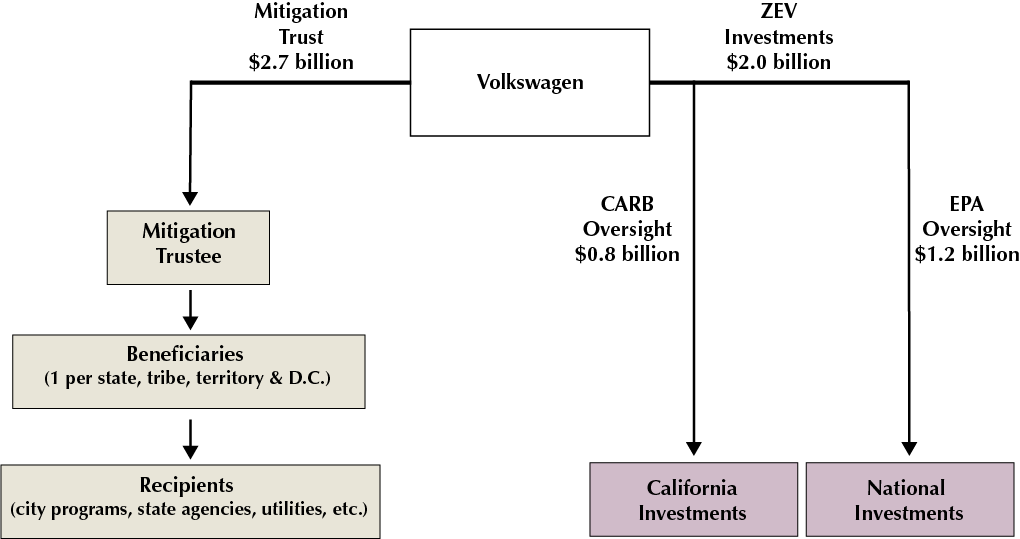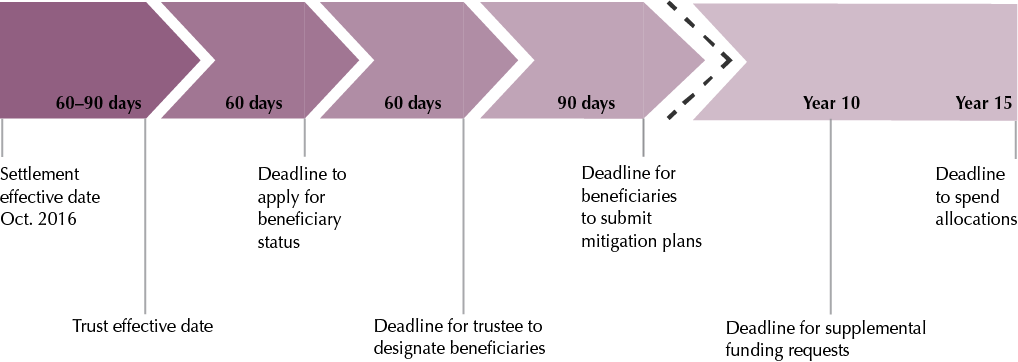Cities and businesses should contact and work actively with the lead agencies in their states to identify and promote opportunities to replace older diesel engines and vehicles. Several states have already identified their lead agencies or principal contacts and are beginning to design plans for how the available funding will be spent. Though funding can be spent over 15 years, as much as two-thirds can be spent within the first two years. Therefore, it is in the best interest of cities or businesses to engage with state agencies early.
ZEV Investment to Expand public EV charging
VW’s initial ZEV Investment is also ready to be put into action through a $200 million California Investment Plan and a $300 million National Investment Plan that covers all other states. VW submitted separate investment plans that cover the next 30 months earlier this year to the U.S. Environmental Protection Agency (EPA) and the California Air Resources Board (CARB). The EPA approved the National Investment Plan, which allocates $40 million to lower-powered community charging in 11 major cities and $190 million to higher-powered fast charging along selected highways across the nation. Community charging will be focused in New York City, Washington, DC, Chicago, Portland (OR), Boston, Seattle, Philadelphia, Denver, Houston, Miami, and Raleigh. Estimated highway charging installations are displayed in Table 3 of the National Investment Plan (page 22).
Though the cities and corridors have been chosen, the sites and vendors have not. The process of selecting sites and vendors for the bulk of charging stations is scheduled for the second and third quarters of 2017. Cities identified for investments in community charging or nearby corridor charging can work with VW’s subsidiary, Electrify America, to identify optimal locations that may promote retail growth or adoption by low-income communities in multi-unit dwellings by hosting charging stations. Businesses may also benefit from increased traffic to use public charging stations (as C2ES has covered in a report on EV charging station business models) or from the opportunity to work with Electrify America to install charging stations.
CARB has not yet approved the California Investment Plan out of concerns for social equity and EV charging market competitiveness, sending a letter to Electrify America requesting that a supplemental plan reflect greater investments in low-income communities. Once CARB approves a plan, California cities and businesses should also consider opportunities to work with Electrify America to optimally site charging stations during the first 30-month round of investments. During the next round of investments, slated to begin in late 2019, proposals to Electrify America may be more successful if they incorporate CARB’s concerns and demonstrate air-quality benefits to low-income communities or a need to fill regional EV charging gaps.
With action on both VW settlements’ funding programs taking shape, cities and businesses should be prepared to identify opportunities to reduce NOx emissions and promote EV adoption.


